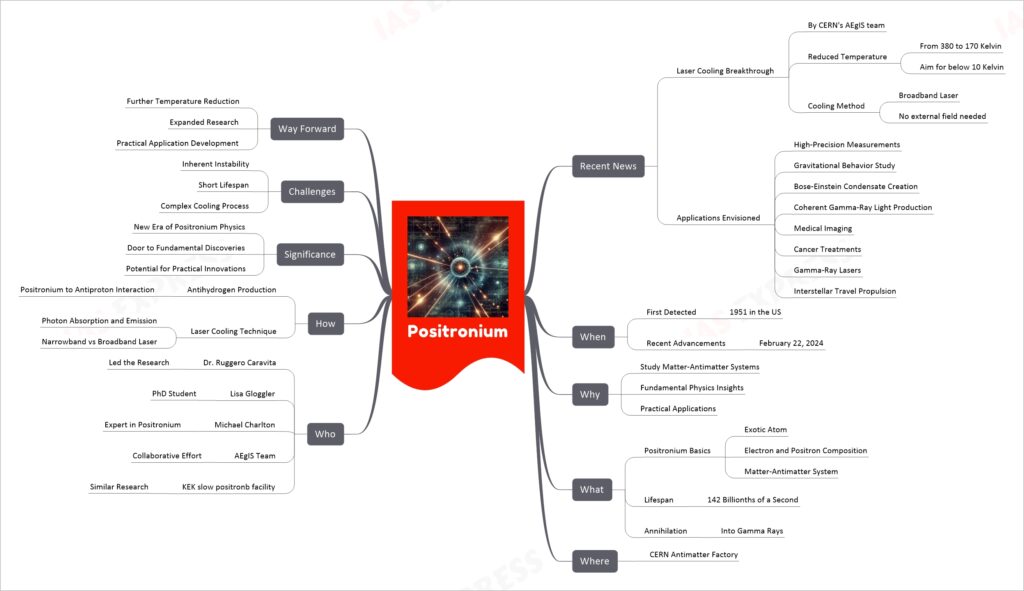Positronium

Positronium is an exotic atom composed of an electron and its antimatter counterpart, the positron. Recently, significant progress has been made in its study, particularly in the field of laser cooling, led by teams at CERN’s AEgIS experiment and other global institutions. By cooling positronium atoms with laser light, researchers have significantly reduced their temperature, enabling more precise measurements and research. This breakthrough not only advances fundamental physics, understanding matter-antimatter interactions, but also opens possibilities for practical applications like medical imaging, cancer treatment, development of gamma-ray lasers, and even interstellar travel propulsion. Despite challenges like its inherent instability and short lifespan, positronium research stands at the brink of exciting new discoveries and applications.
If you like this post, please share your feedback in the comments section below so that we will upload more posts like this.

